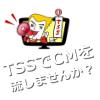A Year of Prayer in HIROSHIMA, August 2021-July 2022
First aired 10:25-11:20 a.m., Saturday, August 6th, 2022
Here, prayer comes in various forms
Hiroshima is where the world’s first atomic bomb was dropped. Peace Park in the center of the city has the A-Bomb Dome, the A-Bomb Museum, the Cenotaph for the Atomic Bomb Victims, and more. All of these tell the reality of the atomic bombing. What kind of people come to this place of prayer? We looked at a year in the life of Peace Park.

Kazuko Watanabe (78) visits the Atomic Bomb Memorial Mound in the park every day at dawn. We saw Mrs. Watanabe carefully raking the fallen leaves at the memorial mound and cleaning the flower stand. Some 70,000 unclaimed remains are enshrined here. Mrs. Watanabe, who has been volunteering for more than 20 years says,”You can say there are 70,000, but each and every one of them was a person who had a precious life with hope for a bright future. The atomic bomb cut that short.” Her sister-in-law, 14 at the time, went missing in the bombing and never returned home.


Today, people from all walks of life visit this place of prayer. People come to take part in the “sennin kenka (flower-offering by 1,000 people)” on New Year’s Day at the Cenotaph for Atomic Bomb Victims. For 60 years, a Buddhist monk has been coming to the Atomic Bomb Memorial Mound on the sixth day of every month to read a sutra. Every day, a man reads witness accounts of Hibakusha at the Hiroshima National Peace Memorial Hall. As we continued our coverage, Russia’s military invasion of Ukraine began. Who came to Peace Park then?


This program depicts the sentiments of HIROSHIMA through the people we met in Peace Park.

Director Norio Maeda

The first time I looked at Peace Park as a “place of prayer”, I became curious about the kind of people who came to the park, so I started going there. After a year of working on this story, I found myself surprised and impressed. As a citizen of Hiroshima, I felt ashamed at just how little I knew. At Peace Park, there are various forms of prayer, every day. However, most visitors are tourist. There are very few citizens of Hiroshima. I’m not just referring to the younger generation. Very few local people visit this place on a regular basis.
The intention of this program is not to make claims or send out a strong message. It is a simple presentation of what is happening today at the place of prayer. Many people appear in the program. I hope that something someone said or something about their actions will grasp the attention of those who watch.
Profile
Joined TSS Productions Inc. in 2006. Winner of numerous awards including Japan Commercial Broadcasters Association Excellence Award for Educational Programming and Science Broadcast Takayanagi Memorial Award for “Innoshima Shipbuilding Story – Life with iron bending” (2007), Galaxy TV Award (July) and Japan Commercial Broadcasters Association Chugoku-Shikoku Screening Committee Excellence Award for Educational Programming for “We play and become human – What play means to children” (2012), and Japan Broadcasting Culture Awards, Chugoku and Shikoku Region Award for Excellence, and Galaxy Encouragement Award (first half), Japan Commercial Broadcasters Association Excellence Award for Educational Programming for “The Man Who Preserved the Legacy of Hiroshima – The Story Behind the Peace Memorial Museum” and Japan Commercial Broadcasters Association Chugoku-Shikoku Excellence Award for News Programming for “Genbaku Dome – What the name has left us” (2014).




